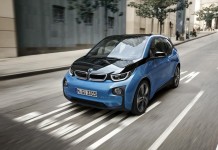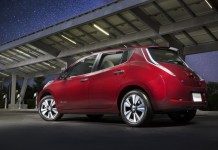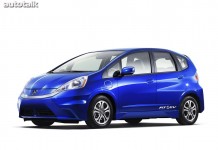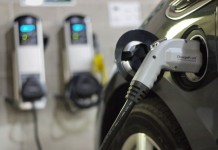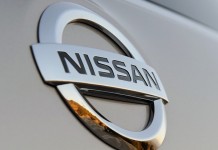This is it. For decades, the human race has known and subsequently fallen in love with the internal combustion engine. These assortments of iron, aluminum and fire have powered the automobile and our souls for an entire century and for the most part, it is all we have ever known. There is, as always, a catch. In order for the piston-filled powerplants to operate, they must burn some sort of fuel and the one that has been picked is starting to run out. Fossil fuels have an end date and for a long time, the millions of automobiles and their drivers were never given an alternative. That is until recently as manufactures have been scrambling to find an answer to their ultimate question. Nissan’s attempt, the 2011 LEAF, might just be the “42” that they’ve been looking for.

This car has been a long time coming. Nissan’s battery-powered vehicle developement can be traced back to 1997 with a few fleet test cars here and there. It wasn’t really until 2009 when the company got rather serious. They unveiled a concept car based on the Japanese-spec Versa which rolled around via a fully electric, lithium-ion battery pack and single drive motor. It wasn’t long after that the production version was named and revealed. On December 11, 2010, the first Nissan LEAF was sold and after that, the automotive world began to change. Now one year old, the LEAF has sold more than 4,000 cars across the globe and its availability is growing at a rapid pace. It may be controversial, but there is no denying that it has been a success so far. There is a question left unanswered though: is that success all hype or is there proof in the paper?


In order to find out, we tested a 2011 LEAF SL, the top trim level of the first model years. Both the base SV and top SL carry standard features such as XM radio, navigation, Nissan Connection telematics for remote monitoring, digital gauges, bluetooth connection, a 12-volt outlet and charging timer. The SL adds fog lights, a rear view monitor, automatic headlamps, Nissan’s HomeLink Universal Transceiver and a spoiler filled with solar panels. Price for our tester: $33,720, which is not including the still-active $7,500 tax rebate from the U.S. Government for purchasing an electric vehicle. Under $30 grand is actually reasonable but if and when that tax break dies out, Nissan might find it more difficult to get rid of LEAFs for their actually asking price. For the 2012 model year, that amount has actually risen and is rather close to the $40,000 mark.




There are plenty of remarkable things about the LEAF but the most obvious one is its outward appearance. For once, an alternative fueled vehicle doesn’t really look the part. Instead, the Nissan resembles an average small, five door hatchback. If it wasn’t for the large “Zero Emissions” tag alongside, it could very well pass of as a run-of-the mill Versa. The aerodynamics are very well thought out as they clearly function without being too gaudy. The headlamps blend into the raked front rather nicely while the tapered ‘grille’ makes the LEAF seem almost sporty. When the car passes and the tail lamps are all that is left, the dripping LEDs seem to fall for miles to give it a handsome and unique look. On the inside, the classic and inoffensive aesthetics take over once again. There is room enough for five people and everything is very well thought out. In every seat, the comfort level is excellent and if it could be driven for hundreds of miles straight, there would be no issue. The hatchback design and long, 106.3 inch wheelbase allow for solid cargo capacity. Nissan’s navigation systems of late have been top-notch and the LEAF’s is no exception. With its slick screen, turn by turn directions and easy to use controls, it is a fantastic companion for the car. It is even smart enough to warn when a selected destination is out of the car’s current driving range. Integrated into the nav are the locations of charging stations and when the battery is low, the closest one will automatically reveal itself to the driver. With numerous warnings and automatic aids, a LEAF operator would either have to be trying or dead to not recognize when the drive needs to end.

The LEAF may be the world’s first mass-produced, fully electric vehicle but it still has limitations. It’s biggest is easily its driving range which can only go as high as 100 miles. That of course is on a full charge and achieved by driving in a very gingerly manner. Nissan makes no claims that the LEAF should be used as a long distance hauler and makes sure that any and all potential buyers know what they are getting into. When ordering a car, if you enter a daily commute of more than 100 miles, Nissan immediately recommends you do not purchase a LEAF. The average daily commute for the Nissan is about 35 miles which means that this is,by all accounts, a city car. Our daily test loop consisted of anywhere from 50 to 60 miles and at the end of each day, the car’s on-board computer said we had roughly 20 miles of driving left. If commuting from point A to point B is all that is needed then the LEAF should definitely be considered; if that round trip happens to be less than 70 miles that is. There was however an uncomfortable level of ‘range anxiety’ at first. A car of this caliber has never really been seen or driven before, so a level of doubt to its range claims was present. After a while, two days to be accurate, that stress started to melt away. The LEAF doesn’t want to be left stranded as it tells you flat-out if it can’t make it to a specific destination.


Driving the LEAF is a little strange at first. As people used to the rumble and grumble of the internal combustion engine, the latest Nissan is quiet: silent even. The reason lies under the hood as there are no pistons to be found but instead, a ‘High Response’ 80 kilowatt AC synchronous electric motor. Powered by a 24 kilowatt hours lithium-ion battery composed of 192 cells and a single speed reducer, the LEAF puts 107 horsepower to the ground via the front wheels. It’s horsepower figure is nothing to really get shocked about but then again, electric motors aren’t know for power but rather torque. The LEAF, with 207 lb-ft, feels like that’s all it knows as our seat-of-the pants dyno certainly would think its torque rating is even higher. In all honesty, we were expecting a rather hybrid-like performance but we were wrong: the LEAF can flat-out scoot. The torque delivery is instantaneous and is even felt in the lower abdomen. During our test time, we managed to do something Nissan probably didn’t have in mind when they built the car: drag race. Lined up against a 2009 Honda Civic, the driver of the gasoline powered sedan saw nothing but electric tail lights up until 60 mph. When the LEAF was first given out to the public, an unofficial 0-60 mph test by Edmunds Auto Observer recorded an acceleration time of seven seconds. Behind the driver seat of our tester, the torque-filled punch made that claim certainly feel very accurate.





Nissan has done a remarkable thing with their latest creation. It is the first time a major manufacture has actively sought out the answer to the ultimate question among the automotive industry. Because of the LEAF, other car makers have followed suit and companies are now scrambling to produce their versions of the car. Competition is actually a good thing as it proves that the industry is finally realizing that fossil fuels are not going to last forever. That fact is clear but what still isn’t is whether or not the electric vehicle is the best solution. The LEAF may be quick, easy to drive and comfortable, but it’s range allows it to be solely a city car. America is big after all: more than 100 miles big. And at the end of the day, the LEAF still needs to recharged. Of all the controversy surrounding the car, this might be most debated. There are many ways to charge the LEAF from the 8 hour 220 volt, 21 hour 110 volt to the only 80 percent, 30 min DC Fast Charge. That feat is only achieved via the optional, $700 DC Quick Charging port. And when the LEAF is charging, that electricity is coming from somewhere and that somewhere runs on coal: a non-renewable source. So maybe the current generation of electric vehicle is exactly the ’42’ the automotive industry is looking for, but Nissan’s attempt is still a rather good one. The company has entered numerous joint ventures with electric experts to try to perfect the charging systems and as the days go by, an inexpensive and useful line of quick chargers are sure to come. Putting all the controversy aside, the LEAF is actually a good car. Nissan has put a lot of time, money and development into their shinning star and it shows. The drive is solid and the power is surprising while the range anxiety disappears after just a few successful trips. The electric vehicle is obviously still in its teething phase, but that shouldn’t deter anyone looking for a well made commuter vehicle from considering a LEAF. There are so many rebates available for the car that it would seem as if the government actually wants you to buy one. This is the trailblazer; the most prominent EV the industry has ever seen. Nissan should pat themselves on the back as their 2011 LEAF is truly remarkable and a winner in our book.
Photos: © Copyright 2011 Ossamah Shabbir


